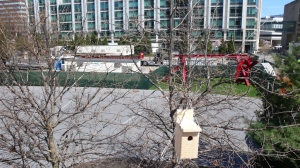Archive for the ‘Uncategorized’ Category

Did you know that the term Sustainability first appeared in a German forestry manual in the 1700s?
Did you know that some people feel paranoid about an alleged conspiracy plan of world domination behind global warming?
What did French philosophers in the Seventies think about ecology?
Discover all the different attitudes of humans towards Nature throughout history. Learn more on the architect’s approach to environmental design and get inspiration from a wide utopian fiction bibliography! Impress your friends with a full set of fresh notions!
The Complex History of Sustainability is a timeline of trends, authors, projects and fiction made by Amir Djalali, with Piet Vollaard. originally published in Volume #18 – After Zero, the timeline has been converted to an interactive website using mashing-up Google maps, using it as a way to navigate this extensive timeline. The technology to do this, Google Maps Image Cutter, has been developed by CASA Go to: The Complex History of Sustainability
Artist, writer, architect, educator, ecologist and radical gardener Fritz Haeg is a key figure to foresee and imagine developments in tune with the issues raised in this blog. From edible estates to animal planning…
The 18th of October 2008, in London, he will be talking in London at the Frieze Talks.
Part of the installation at the Biennale is an archive of projects, news, definitions and opinions surounding the three scenarios presented. Here are some examples of the info cards made for each issue. boeristudio_wilderness
The idea behind the Boeri Studio’s Biennale installation is to present three different and extreme scenarios of an urban future radicalized around notions of sustainability. These visions can pass very quickly from utopian ideas regarding new relations between nature and the city to nightmarish scenarios that could also make the city unlivable.
A series of eclectic materials (models, diagrams, books, an archive of projects and news, etc.) display the stories behind the three radically different urban visions while a video by the Flocking project shows the way in which flocks of birds invade Roman skies and the tactics used to shift them away: an example of the thin line between the utopia or dystopia of a sustainable future.




 Sustainability according to Volume:
After Zero is not about design inspired by the fear of tsunamis or Katrinas, but proposes an understanding of our society beyond zero.
Sustainability according to Volume:
After Zero is not about design inspired by the fear of tsunamis or Katrinas, but proposes an understanding of our society beyond zero.